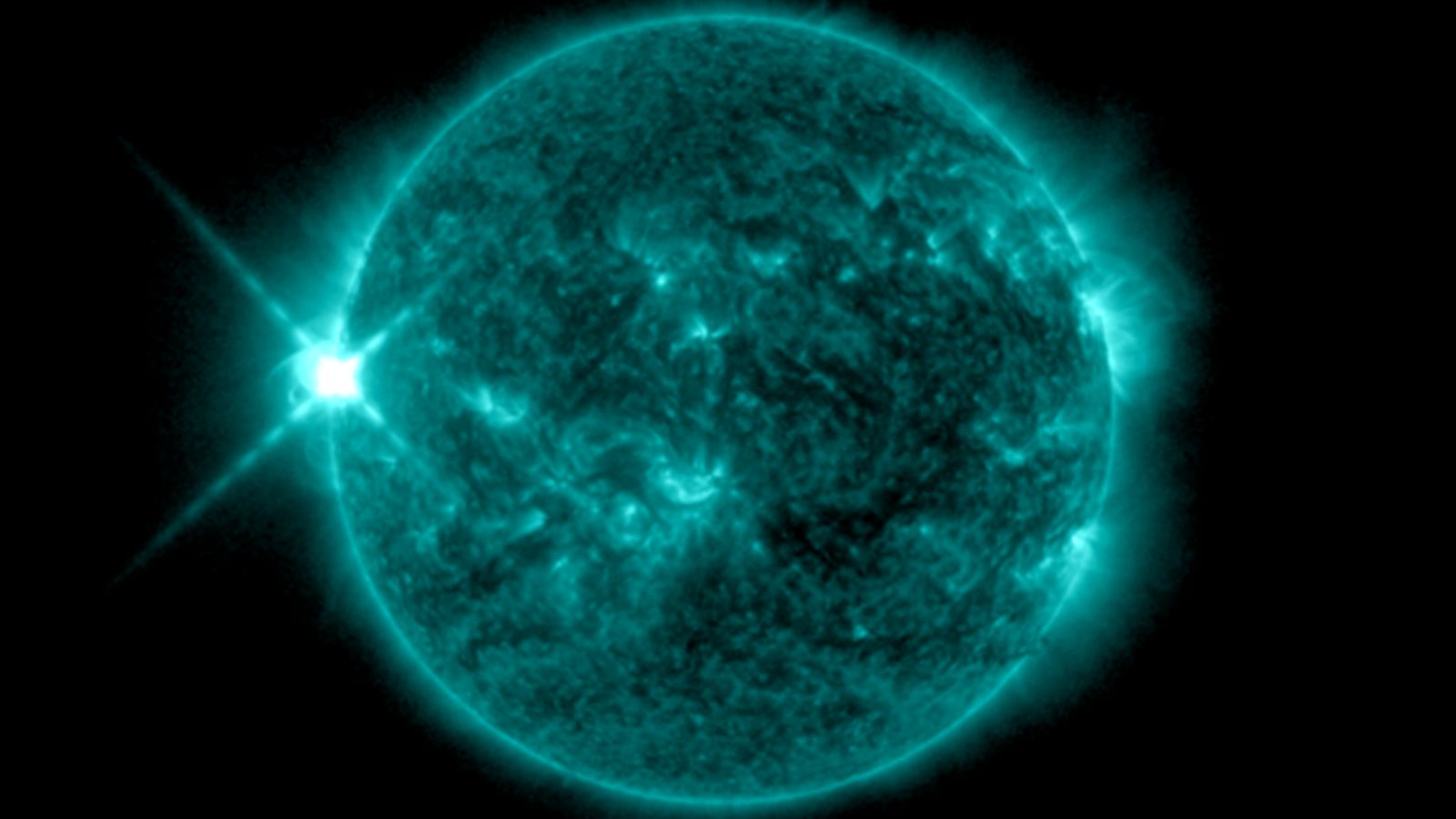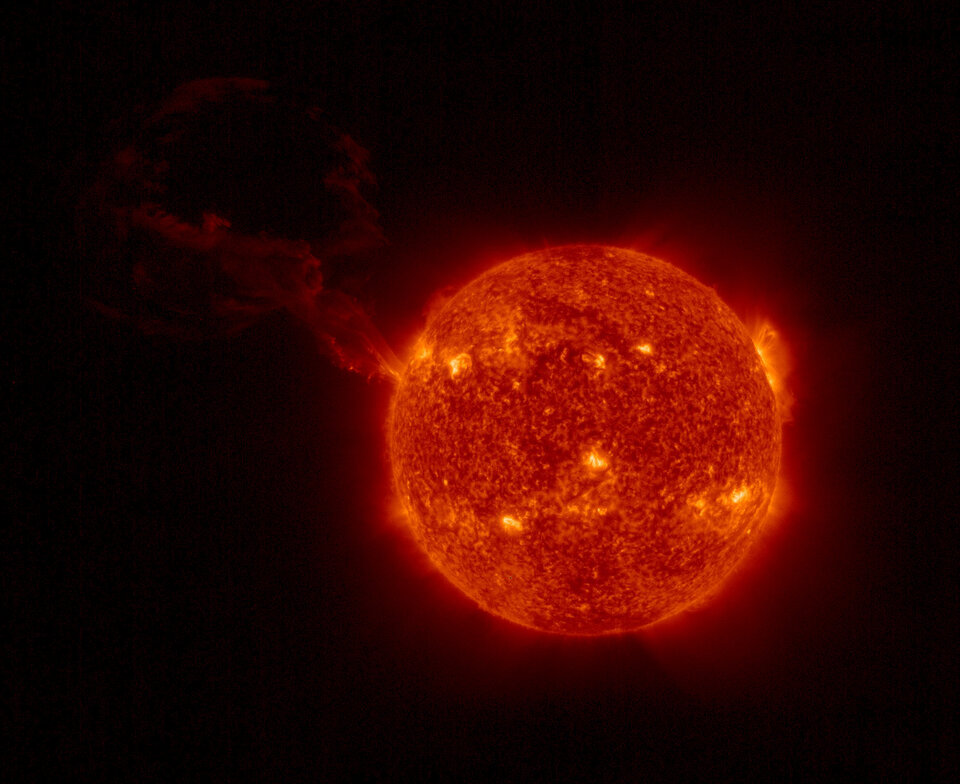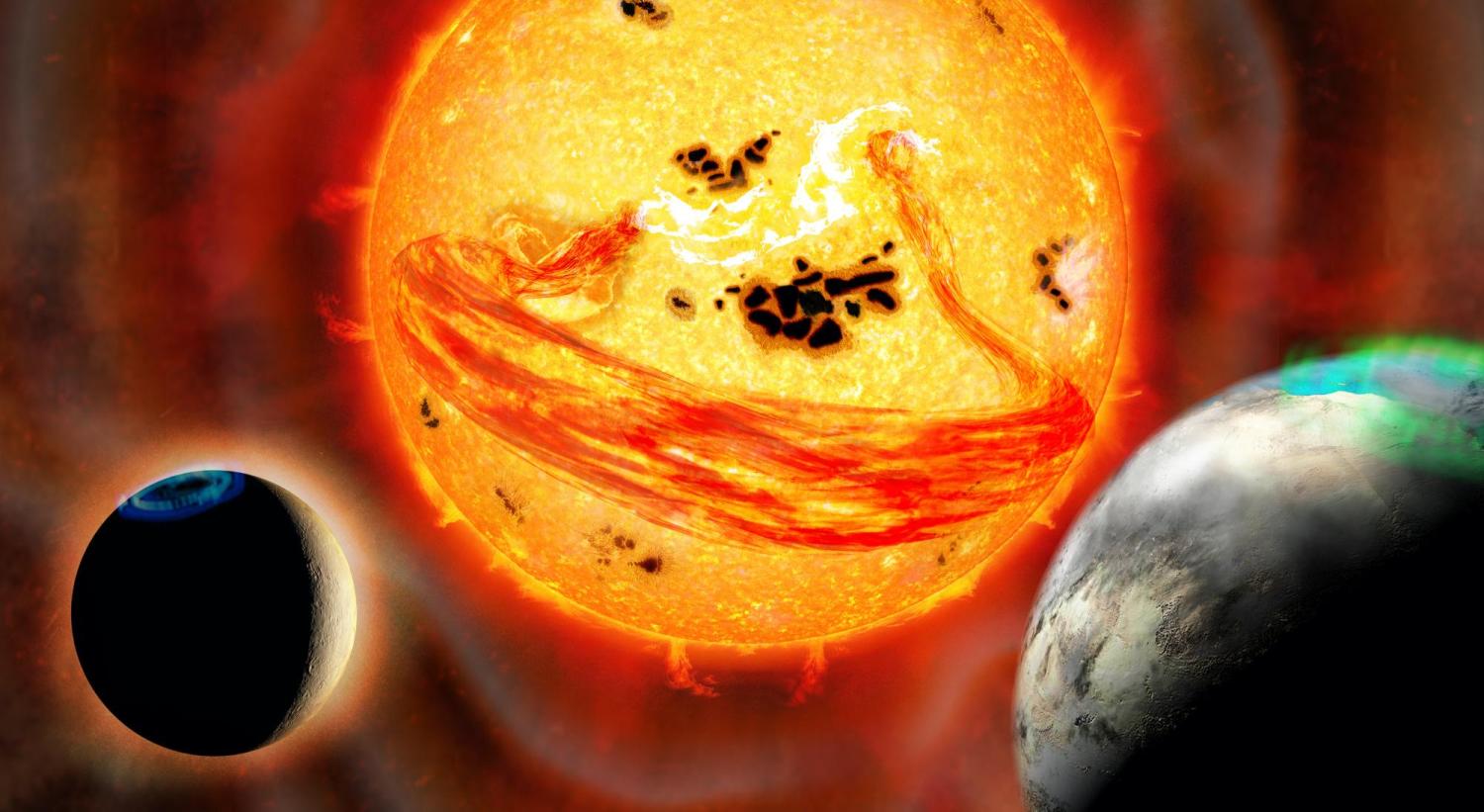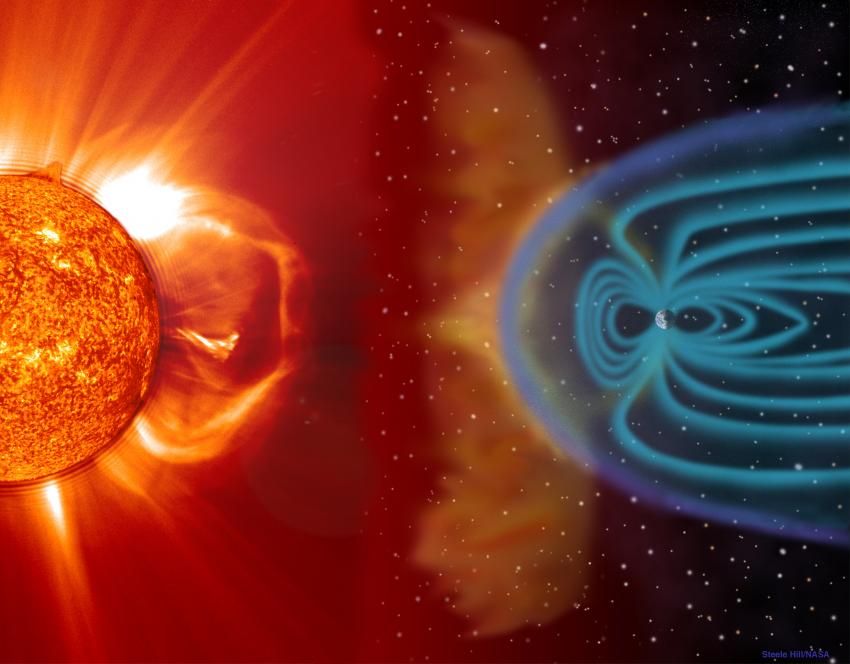Yesterday the Sun released a huge solar flare, and it’s heading toward Earth! It’s nothing to worry about since it’s nowhere near as large as the Carrington Event of 1859, but it is large enough to give us some amazing aurora.
Continue reading “The Sun Unleashes its Strongest Flare This Cycle”Solar Flares and Solar Magnetic Reconnection Get New Spotlight in Two Blazing Studies

Two recent studies published in The Astrophysical Journal discuss findings regarding solar flare properties and a new classification index and the Sun’s magnetic field, specifically what’s called solar magnetic reconnection. These studies hold the potential to help researchers better understand the internal processes of the Sun, specifically pertaining to solar flare activity and space weather. Here, Universe Today discusses these two studies with both lead authors regarding the motivation behind the studies, significant results, and implications on our understanding regarding solar flares and space weather.
Continue reading “Solar Flares and Solar Magnetic Reconnection Get New Spotlight in Two Blazing Studies”That Recent Solar Storm Was Detected Almost Three Kilometers Under the Ocean
On May 10th, 2024, people across North America were treated to a rare celestial event: an aurora visible from the Eastern Seabord to the Southern United States. This particular sighting of the Northern Lights (aka. Aurora Borealis) coincided with the most extreme geomagnetic storm since 2003 and the 27th strongest solar flare ever recorded. This led to the dazzling display that was visible to residents all across North America but was also detected by some of Ocean Networks Canada‘s (ONC) undersea sensors at depths of almost three kilometers.
Continue reading “That Recent Solar Storm Was Detected Almost Three Kilometers Under the Ocean”The Sun Hurls its Most Powerful Flare in a Decades
The Sun has been vying for attention these last couple of weeks. First with the appearance of a fabulous complex sunspot region and then with a plethora of solar flares. On the 14th May, yet another was released, this time an X8.7 class flare from the same complex sunspot regions. It was significantly more powerful than the flare that set off the aurora displays which enchanted much of the planet but alas it was not pointing toward the Earth ( 🙁 sad emoji face.) Even though it was not directed at us, it could still disrupt communications and electronics but is a reminder that the Sun, whilst is on its way to solar maximum still has lots to give.
Continue reading “The Sun Hurls its Most Powerful Flare in a Decades”The Sun Gets Feisty, Throwing Off Three X-Class Flares Within 24 Hours
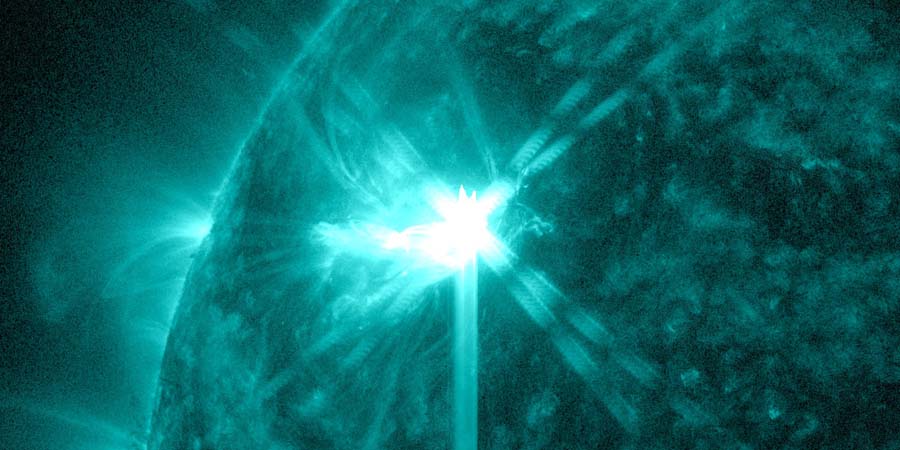
The Sun is heading toward solar maximum (which is likely to be about a year away) and as it does, there will be more sunspots, solar flares and coronal mass ejections. Over the last 24 hours there has been three, yes three X-class flares, the first peaking at X1.9, the second 1.7 and the final one a mighty 6.3. Flares of this magnitude caused radio blackouts, disruption to mobile phones and radio transmissions.
Continue reading “The Sun Gets Feisty, Throwing Off Three X-Class Flares Within 24 Hours”The Sun Just Blasted its Strongest Flare in 6 Years. Get Ready for Auroras
While many of us were celebrating the end of 2023 and the coming of 2024, the Sun was having its own celebration blasting an X5.0 flare from sunspot region 3536. Records show this to be the most powerful flare seen since 10 September 2017 when an X8.2 flare erupted. The flare is expected to arrive around Jan 2 – EEK that’s today! Get your aurora watching kit out!
Continue reading “The Sun Just Blasted its Strongest Flare in 6 Years. Get Ready for Auroras”Solar Orbiter’s Pictures of the Sun are Every Bit as Dramatic as You Were Hoping
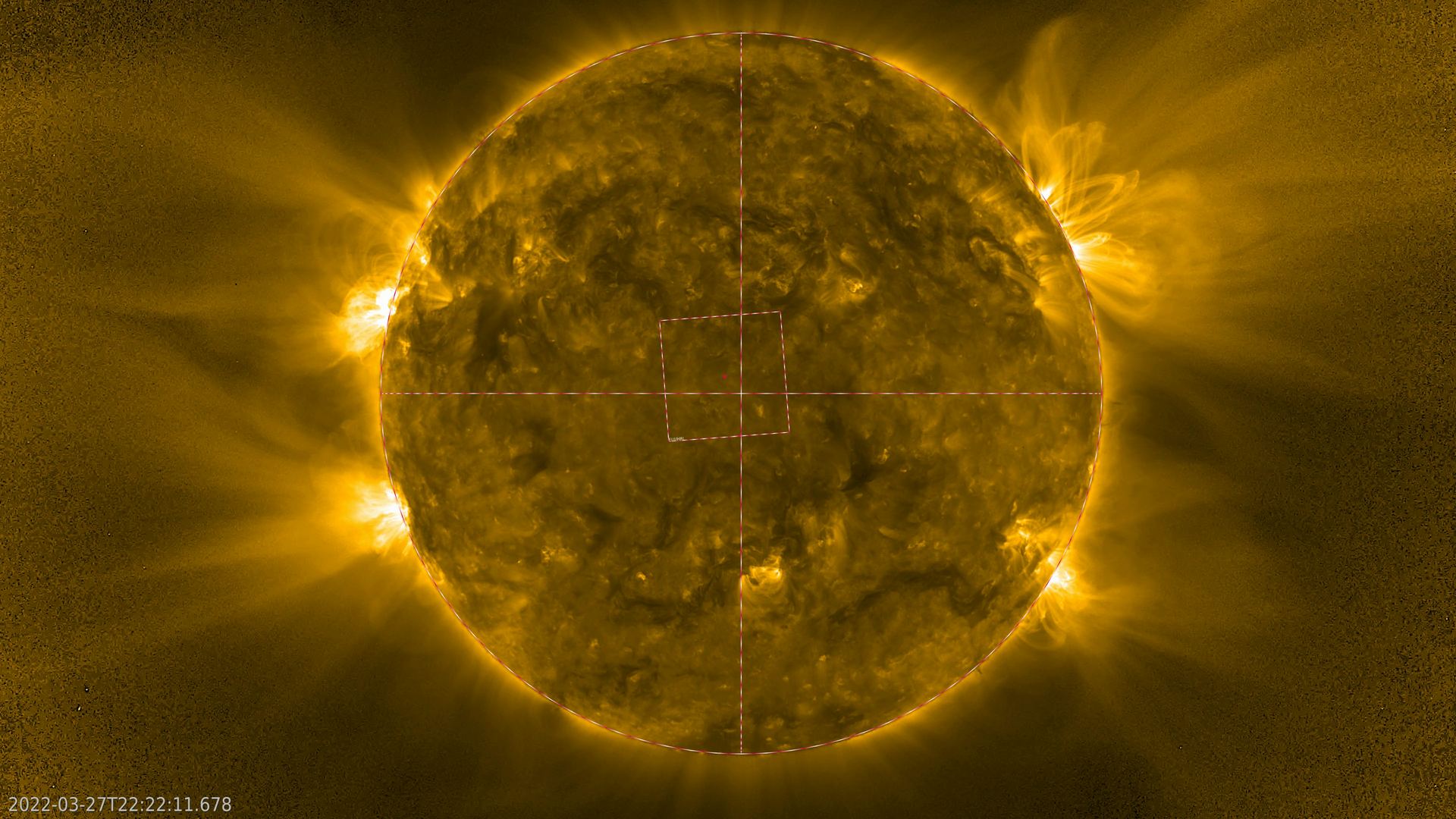
On March 26th, the ESA’s Solar Orbiter made its closest approach to the Sun so far. It ventured inside Mercury’s orbit and was about one-third the distance from Earth to the Sun. It was hot but worth it.
The Solar Orbiter’s primary mission is to understand the connection between the Sun and its heliosphere, and new images from the close approach are helping build that understanding.
Continue reading “Solar Orbiter’s Pictures of the Sun are Every Bit as Dramatic as You Were Hoping”A Colossal Flare Erupted From the Far Side of the Sun
Earlier this week the Sun erupted with a huge explosion, blasting solar particles millions of kilometers into space. The team for the ESA/NASA Solar Orbiter spacecraft says the blast is the largest solar prominence eruption ever observed in a single image together with the full solar disc.
Luckily for us here on Earth, the eruption on February 15, 2022 occurred on the farside of the Sun, the side facing away from our planet. But ESA and NASA predict geomagnetic storms are possible in the next few days as the active region on the Sun responsible for the blast turns toward us.
Continue reading “A Colossal Flare Erupted From the Far Side of the Sun”A Sun-Like Star Just Blasted out a Flare That Would be Devastating if it Happened Here
In the search for “potentially-habitable” extrasolar planets, one of the main things scientists look at is stellar activity. Whereas stars like our own, a G-type (G2V) yellow dwarf, are considered stable over time, other classes are variable and prone to flare-ups – particularly M-type red dwarf stars. Even if a star has multiple planets orbiting within its habitable zone (HZ), the tendency to periodically flare could render these planets completely uninhabitable.
According to a new study, stars like our own may not be as stable as previously thought. While observing EK Draconis, a G1.5V yellow dwarf located 110.71 light-years away, an international team of astronomers witnessed a massive coronal mass ejection that dwarfed anything we’ve ever seen in our Solar System. These observations suggest that these ejections can worsen over time, which could be a dire warning for life here on Earth.
Continue reading “A Sun-Like Star Just Blasted out a Flare That Would be Devastating if it Happened Here”When the Sun Dies, Earth’s Magnetosphere won’t Provide Protection any More
The Earth’s magnetic field is an underappreciated wonder of the natural world. It protects our atmosphere, provides some of the most breathtaking scenery when it creates auroras, and allows people to navigate from one side of the world to the other. Unfortunately, it won’t be able to save us from the death of the Sun though. At least that’s the finding of some new research by Dr. Dimitri Veras of the University of Warwick and Dr. Aline Vidotto of Trinity College Dublin.
Continue reading “When the Sun Dies, Earth’s Magnetosphere won’t Provide Protection any More”



